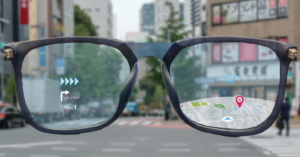
Throughout my 40 year career covering this industry, sales have regularly tipped, from client to server and back again. The 1980s were a client decade, the 1990s a server decade.
During this century, the Cloud changed much of this. The only growth for high-end PCs came in game machines. Most Intel sales in the 2010s went to the Cloud Czars and their train, whose hyperscaled data centers now define computing for most people.
Of course, that’s not the whole story. The smartphone revolution, and devices like drones and watches, consume a ton of silicon. The real reason for Intel’s fall was its failure in these markets, which I covered for market researchers early in the 2000s.
It’s the upgrade of Clouds to serve AI that’s now fueling a new market shift to clients. There were hints of this in the most recent quarter, Intel stock up over 9% in the last three months. There are further hints in AMD and Nvidia deciding to make CPUs based on ARM designs, aiming to take this new source of growth from Intel.
But please don’t cry for Chipzilla. Intel CEO Pat Gelsinger is buying his own stock because a lot of those new designs will be made in Intel factories. Taiwan Semiconductor can’t possibly soak up all the new demand. Its first Ohio plant comes online in 2025. Intel is also building new fabs in Arizona, alongside Taiwan Semi’s growth.
 Your Next “PC”
Your Next “PC”
What does this all mean? First, get ready to toss your current PC. Second, expect whatever PC you buy two years from now to have new, spoken interfaces, and networking connections to your headphones and wearables. AI is dumping the old Star Trek joke where Scotty picked up a mouse and tried to talk to a Mac. It’s going to become very real.
That part of the client story will continue to pick up steam as this decade wears on. There will be two types of clients. There will be high-end machines used to build LLMs and algorithms, in concert with cloud servers. There will also be new types of clients for consumer use, computers living in your glasses, in your earphones, and on your wrist, making smartphones look as quaint as PCs look now in movies made 30 years ago.
Get ready.


 Your Next “PC”
Your Next “PC”







